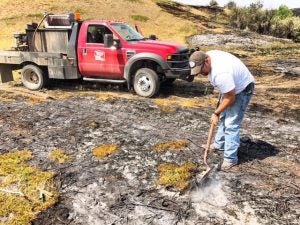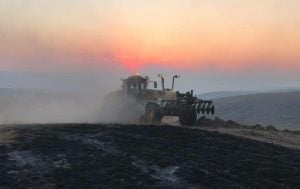The flames that swept across Montana during a severe drought year left destruction in their wake but, as tends to happen, brought the best of agriculture and rural America to the surface.
Whitney Klasna, a Lambert, Montana, rancher and social media maven, spent long days fighting one of the state’s numerous fires. An accidental fire near their ranch left 8,000 acres of both private and state ground bare of grass, already in short supply due to drought conditions. It appears that no livestock were lost in this particular fire, but the long-term health challenges are yet to be known. Departments across the state, and in the Klasnas’ area, continue to battle blazes brought on by lightning during severe storms as the area begins to receive some precipitation. Unfortunately for the Klasnas, and many like them, the rains are coming too little and too late to provide the hay and crops needed.

The fire near the Klasnas’ ranch burned at the same time as the Lodgepole Complex fire, which ignited on July 19 some 50 miles northwest of Jordan, Montana. According to the Incident Information System, with information gathered from the United Forest Service and local command organizations, the fire burned over 270,700 acres. In its path, the fire destroyed 16 homes and significant amounts of fence, hay, power poles, and secondary structures. The fire has been turned over to the command of local organizations.
As was the case during and after the fires in Colorado, Kansas, Oklahoma, and Texas last spring, the response to the ranchers who lost their homes, ranches, and cattle has been generous. Loads of hay from as far as North Carolina have been trucked into the areas affected. FFA and 4-H groups have rallied to gather feed and fencing supplies. The families who were devastated by the fires in Colorado, Oklahoma, Kansas, and Texas have also sent donations. In Meade County, Kansas, a few of the “fire babies,” as the calves were referred to, were shown, and the 4-H kids who have cared for them in the months following the blaze were recognized for their efforts. During the beef show, a trailer was loaded with donations, bound for Montana.
“It speaks volumes to the agriculture community,” Klasna said. “Community doesn’t end at the county or state line. It expands across the U.S., and it makes you blessed to be in this profession and to be able to call those people your friends.”
Klasna and a group of young people with Montana roots are currently coming together to organize a Fire and Drought Relief event with a concert, the details of which will be announced at the Miles City Brew Fest.




